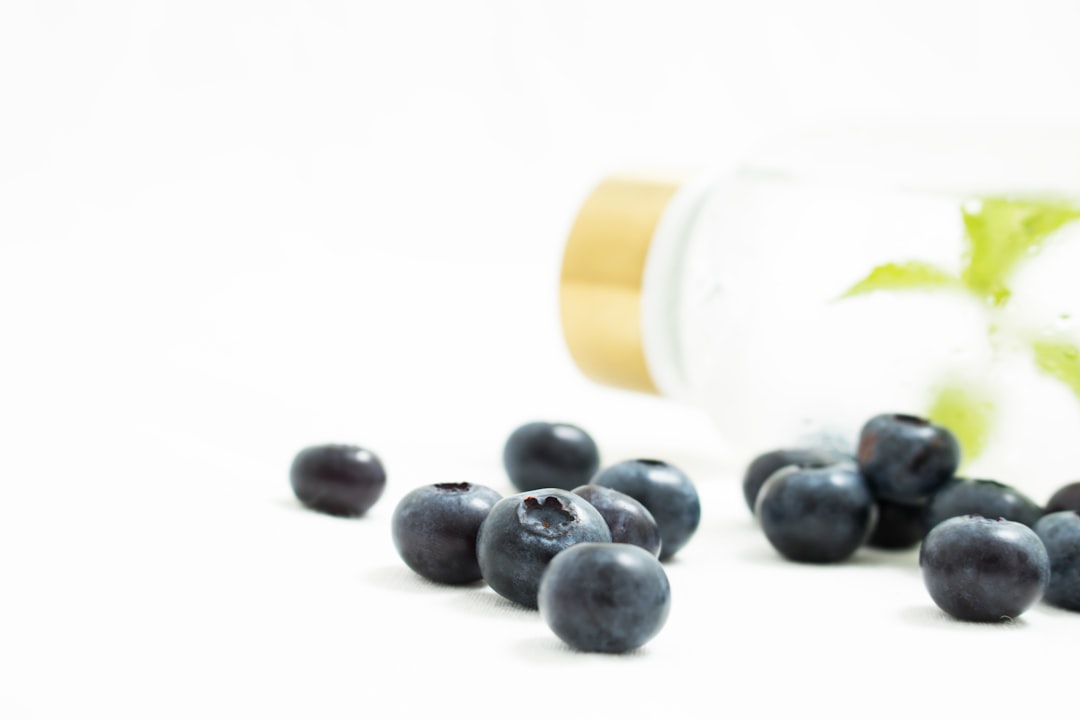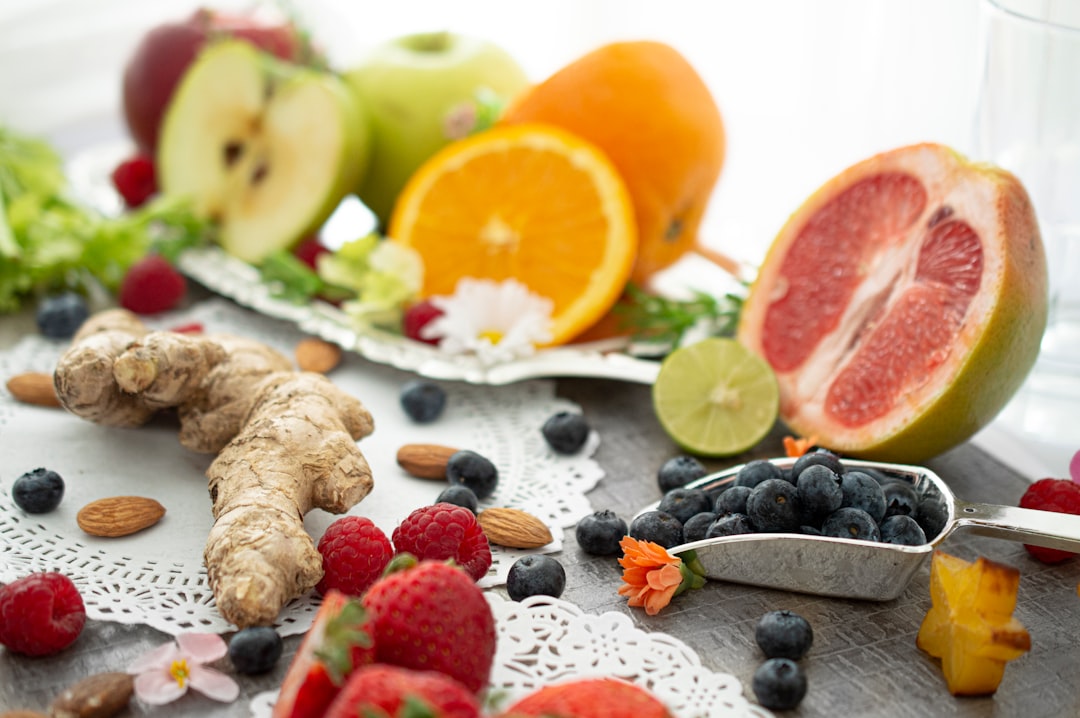
Transitioning to a low-carb lifestyle is great for managing blood sugar health, and there are easy hacks to create delicious, filling, and nutritious low-carb meals. In this article, we will discuss the benefits of eating low-carb, foods to avoid on a low-carb diet, and easy low-carb recipes that support healthy blood sugar levels.
How Can a Low-Carb Diet Help With Managing Blood Sugar Levels?
Eating foods high in carbohydrates can trigger an irregular insulin response, leading to spikes in blood sugar levels.
Eating low-carb foods can improve the insulin response, helping you avoid spikes in blood sugar levels.
Here’s how it works:
After you eat, carbohydrates are metabolized into sugar, known as glucose. Glucose is transported via the bloodstream to cells where it will be converted into fuel. When glucose arrives at cell walls, it needs something to help it get inside. This is where insulin comes into the picture. Released from the pancreas, insulin acts as a key, opening the gates for glucose to enter cells. This is the basic function of the metabolic system.
Consuming foods high in carbohydrates can overload the metabolic system. Glucose floods the bloodstream, so much so that insulin can’t do its job and open up cell walls. Instead, glucose builds up in the bloodstream, continuing to rise, and spike blood sugar levels.
This is how eating foods high in carbohydrates can cause unhealthy blood sugar levels, and along with it, symptoms of erratic blood sugar.
This is why professionals recommend a diet low in carbohydrates to maintain healthy blood sugar. Low-carb foods lessen the risk of blood sugar spikes, allowing the metabolic system to function optimally.
Do I have to Avoid All Carbs on a Low Carb Diet?
Carbohydrates are not all inherently bad for you. Certain carbohydrates pose a greater risk to blood sugar levels, while others can benefit your health. Let’s examine which carbs you should avoid, versus the carbs you should include in your low-carb diet.
What Carbs Raise Blood Sugar Levels?
Avoiding empty carbs is key for healthy blood sugar levels. They are called “empty carbs” because while they are high in carbohydrates and calories, they bring little to no nutritional value to your diet.
Here are some empty carbs you should avoid for optimal blood sugar levels:
White Carbs
White carbs are infamous for raising blood sugar levels. These include carbs found in white bread, white pasta, white flour, and white rice. White carbs are typically associated with foods that have been highly processed. Many white-carb foods have gone through an extensive bleaching process which essentially strips the food of all its nutrients.
Refined/Added Sugars
Sugar is the enemy of healthy blood sugar levels, and refined/added sugars are the worst of them all. Refined/added sugars are what you’ll find in sodas, juices, cookies, boxed cakes, and processed foods like cereal and ice cream. Refined sugars are so bad for you because they go through numerous chemical processes — chemicals that just aren’t good for your health. People watching their blood sugar should avoid refined/added sugars at all costs.
Remember — even if a food isn’t sweet, like potato chips or salad dressing, it can still be full of added or refined sugars. Make sure to read the product labels carefully to discern what’s really in your food.
Johns Hopkins recommends these tips for finding the hidden sugar on food labels:
- Anything ending in “ose” (fructose, sucrose, dextrose)
- Anything with syrup (corn syrup, rice syrup)
- Anything with sugar (cane sugar, added sugars)
What Carbs Are Good For Maintaining Healthy Blood Sugar Levels?
Now that we’ve discussed the carbs that can raise blood sugar, let’s talk about nutritious carbs. These carbs include foods like sweet potatoes, kidney beans, goji berries, apples, beetroot, and lentils. All of these foods are what experts call “good carbs” as they promote metabolic wellness, and you can enjoy them in moderation with little risk of blood sugar spikes.
Additionally, the majority of vegetables are low-carb and help promote healthy blood sugar levels. Deep leafy greens, peas, green beans, artichokes, cauliflower, broccoli, and carrots — these are all great low-carb foods to keep in your diet.
When choosing carbs to add to your diet, keep in mind that the general recommended intake for a low-carb diet is between 100-150 grams/per day. This means even when enjoying “good carbs” you must be careful not to go over this carb threshold if you want to keep your carb intake on the low end.
The Brown Rice Debate
Fiber-rich brown rice has been labeled a healthy carb for many decades, but some question its arsenic and phytate content. Arsenic, which in high doses can be a lethal poison, is naturally occurring in soil all over the world. This is why low levels of arsenic are present in many foods, including both brown and white rice.
Phytates are anti-nutrients that rice plants naturally produce to ward off predators. They can be hard to digest, causing gas and intestinal discomfort.
While at first glance arsenic and phytates sound like things to avoid, the science is not conclusive on whether or not the benefits of brown rice outweigh the risks. Some say that brown rice has unknown dangers, while others say the cooking process virtually eliminates all potential health risks.
From a science perspective, the jury is still out on brown rice. Given its rich nutrient content, most experts will likely continue to promote brown rice as a healthy carb and optimal choice over white rice.
Healthy Low-Carb Dinner Recipes
Now that you understand more about how carbs affect your blood sugar health, here are a few low-carb recipes you can try adding to your dinner routine. The general structure of a great low-carb dinner is a combination of high protein, healthy fats, and good carbs. With these meals, you’ll be able to craft easy, delicious, and filling low-carb dinners that help you stay on track with your health goals.
1. Cheesy Stuffed Bell Peppers with Ground Turkey
Stuffed bell peppers are the go-to classic for low-carb eating. This recipe cuts out the addition of rice or beans, but we promise, you won’t miss them!
Ingredients:
1 pound of ground turkey
4 large bell peppers (orange, red and yellow are preferred)
2 cups of your favorite cheese
¼ cup diced yellow onions
2 celery stalks chopped
¼ cup diced bell pepper
Salt & pepper to taste
Drizzle of avocado oil
Cooking instructions:
Preheat your oven to 350 degrees.
Heat skillet to medium-high heat, and drizzle with avocado oil once hot. Add chopped veggies and saute until onions become translucent. Then add ground turkey and brown until thoroughly cooked. Add salt and pepper to your liking. Once the turkey is ground, drain off excess grease, then set aside.
Take bell peppers cut off stems and remove seeds. This should leave a sizable opening in the top of the bell pepper. Drizzle peppers with avocado oil and lightly season with salt and pepper.
Next, arrange bell peppers top side up in a 9 x 13 baking dish. Then, with a spoon, fill each bell pepper with the ground turkey mixture. Top off the peppers with cheese. Cover with a lid or aluminum foil (be sure the foil doesn’t touch the cheese). Bake for 30 minutes or until they reach desired tenderness.
2. Creamy Tuscan Chicken with Spinach and Sundried Tomatoes
This recipe is sure to be a hit at dinner time. All you need is one pot to achieve this scrumptious low-carb dinner.
Ingredients:
1 lb of chicken breasts (cubed)
2 cups of fresh spinach
1 ½ cups of heavy cream
¼ cup of parmesan cheese
¼ cup sundried tomatoes
¼ cup of diced yellow onion
3 cloves of garlic (finely chopped)
Salt & pepper to taste
Italian seasonings to taste
Cooking Instructions:
Heat skillet on medium-high and drizzle with avocado oil. Add cubed chicken breasts to the hot pan. Sprinkle it with salt and pepper for flavor. Cook thoroughly, and remove the chicken from the pan. Set chicken to the side.
Without cleaning the pan, add the diced onions. Saute until translucent. Next, reintroduce chicken to the pan with the onions. Reduce heat to medium, and pour over heavy cream. Stir in spinach, and Italian seasonings.
Reduce heat to simmer and add parmesan cheese. On low heat, stir the ingredients in the pan, ensuring all cheese is melted. Lastly, top with sun-dried tomatoes. Serve immediately.
3. Crock Pot Pork Carnitas
This is a simple, yet tasty “set it and forget it meal.” Your tastebuds will be buzzing with one whiff of this aromatic dish.
Ingredients:
1 lb of pork roast (either shoulder or pork butt)
½ teaspoon of cumin
½ teaspoon of paprika
½ teaspoon of salt
½ teaspoon of pepper
¼ cup of diced yellow onions
4 garlic cloves (peeled and whole)
1 can of crushed tomatoes (any flavoring works)
The juice of 2 oranges
Half a jalapeno (more if you like it hot!)
Cooking instructions:
Set pork into the center of the crock pot dish. Toss onions and garlic directly on top. Follow up with all seasons. Next, pour over crushed tomatoes and orange juice. Then lastly add jalapeno. For an 8-hour cook, turn the slow cooker on low. For a 6-hour cook, turn the slow cooker on high.
Try not to open the lid until the end of the cooking time. When the cooking time is over, remove the lid and stir the pork. Taste and add seasonings if desired.
*Note if your carnitas come out too salty, add water (a half cup at a time) to disperse the salt flavor.
Serve alongside a bed of greens, roasted veggies, or even a baked sweet potato.
These meals are just a snapshot of the limitless possibilities with low-carb dinner ideas. If you use the structure of high protein, healthy fats, and good carbs, you’ll be inspired to put together delicious dinners for every night of the week.
One More Tip for Maintaining Healthy Blood Sugar Levels
Eating a whole-food, low-carb diet is the best way to maintain healthy blood sugar levels. For added support, we recommend using our supplement SucraLow for blood sugar management.
SucraLow is a natural supplement featuring clinically studied nutrients shown to support healthy blood sugar levels. With ingredients like chromium, white mulberry, magnesium, and more, SucraLow is a nutritional powerhouse for blood sugar health:
- Supports healthy blood sugar levels
- Supports healthy carb and sugar absorption
- Promotes healthy weight management
- Boosts heart health and energy
- Curbs cravings and promotes better digestion
Conclusion
Adopting a low-carb lifestyle has many benefits. While it will require discipline, you can still enjoy every meal without feeling like you’re missing out. As you learned in this article, there are many low-carb/healthy-carb food options you can enjoy guilt-free!
With the examples provided, you can now put together low-carb recipes for dinner that are both delicious and satisfying. Just remember to avoid those troublesome high-carb foods, and you’ll be good to go!
When it comes to supplements, we love SucraLow for added support on your low-carb journey. SucraLow makes it easier than ever to maintain healthy blood sugar levels, manage weight, and support healthy carb absorption. Think of SucraLow as your second line of defense against erratic blood sugar.
Remember, start small and give yourself grace as you practice low-carb eating. In the beginning, it can seem daunting, but the more you stick with it, the better you’ll become at choosing the food that’s right for your blood sugar health.
Sources:
Finding the Hidden Sugar in the Foods You Eat. (2021). Inwww.hopkinsmedicine.org. https://www.hopkinsmedicine.org/health/wellness-and-prevention/finding-the-hidden-sugar-in-the-foods-you-eat
How to reduce arsenic in rice, and why it matters. (2023). Inhealth.osu.edu. https://health.osu.edu/wellness/exercise-and-nutrition/how-to-reduce-arsenic-in-rice
Su, L. J., Chiang, T.-C., & O’Connor, S. N. (2023). Arsenic in brown rice: do the benefits outweigh the risks? InFrontiers in nutrition (Vol. 10, pp. 1209574–1209574). Frontiers in nutrition. https://doi.org/10.3389/fnut.2023.1209574
[2] https://www.ncbi.nlm.nih.gov/pmc/articles/PMC10375490/
[3] https://health.osu.edu/wellness/exercise-and-nutrition/how-to-reduce-arsenic-in-rice






















